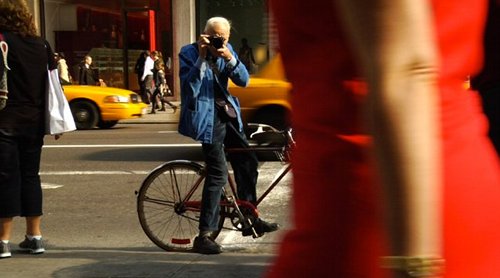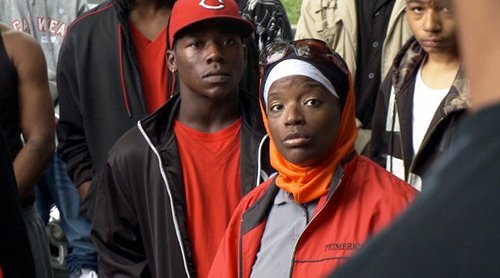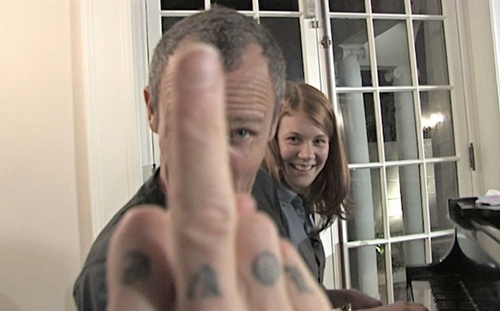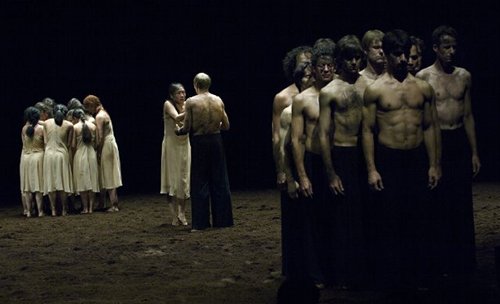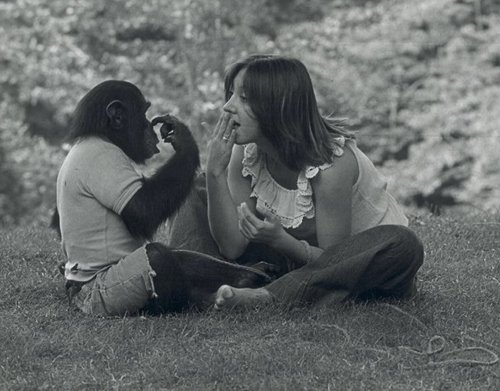

By Kim Voynar Voynar@moviecitynews.com
Top Ten 2011: Documentaries
Here’s the last of my 2011 wrap-ups: The best 10 documentaries I saw last year. They encompassed a wide array of subjects, and each told its story in a unique way, from the bottomless heart of Kevin Clash in Being Elmo, to the impressionistic energy of Dragonslayer, to the stunning movement and dance of Pina … here are the docs that I’m still thinking about now that 2011 is behind us.
Being Elmo: A Puppeteers Journey, Constance Marks
What’s special about this film is that it’s not so much about the furry red muppet, but the man behind him — Kevin Clash. Clash is intrinsically interesting because his very nature is both so ordinary and extraordinary. Here’s this kid from Baltimore who knew from the time he was very young that he wanted to work with puppets, who was so drawn to this path, so tenacious in his efforts, that he was able to achieve his dream. But it’s Clash’s gift for connecting with others through the persona of Elmo that’s pure magic, and gives this film its heart and soul.
Bill Cunningham New York, Richard Press
A parable about values and the clash of money versus freedom is woven around this delightful doc about Bill Cunningham, style photographer for The New York Times, who’s spent his entire career meticulously documenting fashion trends and style on the streets of New York City. The real heart of this story is Cunningham’s fiercely independent spirit, and his utter indifference, even disdain for, the wealth and the lifestyles his work often documents. Brilliant, insightful little film.
Buck, Cindy Meehl
One of the surprises of Sundance, this quiet, modest doc introduces us to the real life model for “The Horse Whisperer,” Buck Brannaman, a man who overcame childhood abuse to become a calm, gentle man who trains horses by treating them with the understanding and compassion with which he wishes his own abusive father had treated him and his brother. One of the most delightful films of any genre last year.
Dragonslayer, Tristan Patterson
This energetic, impressionistic documentary, which follows down-on-his-luck, ex-pro skateboarder Josh “Skreech” Sandoval through a year of hedonistic wanderings, skating in abandoned swimming pools, injuries, pot smoking and drinking, homelessness, a new romance, and visits with his young son, is so creatively edited and visually compelling, it almost doesn’t matter whether you’re interested in or relate to the characters. The whole thing is all a bit morally ambiguous — but then, so was Exit Through the Gift Shop. Besides, does a documentary have to take a moral stance to be relevant?
Everyday Sunshine: The Story of Fishbone, Lev Anderson and Chris Metzler
Mining an abundance of live performance footage, directors Lev Anderson and Chris Metzler piece together this Valentine of sorts to LA punk-ska band Fishbone, “famous but not rich,” who were as groundbreaking musically as they were for being a black band in a white-dominated music genre. I’ve watched this one a couple times, and the biggest criticism I have about it is that I wish Anderson and Metzler had approached their subject with a bit less awe and a bit more of an inquisitive, journalistic eye; there are times when it almost feels a little too neatly scrubbed of the details you’d really like to hear — especially as they get into Kendall Jones departure from the band after finding religion. Regardless, this doc is a fascinating slice of music history. If you saw Fishbone perform live at the height of their awesomeness in the mid-80s through early ‘90s, Everyday Sunshine will take you right back, and if you didn’t, well, this movie will make you wish you had.
Hell and Back Again, Danfung Dennis
Hell and Back Again — technically proficient, packed with these bold, gruesome, beautifully shot and composited scenes in the midst of battle, but equally impactful in drawing out the human moments that make it all real — reminded me in some ways of one of my favorite recent war docs, James Longley’s excellent Iraq in Fragments (perhaps not surprisingly, the films have in common a fantastic editor in Fiona Otway). Photojournalist-turned-filmmaker Danfug interweaves footage from Afghanistan with the story of Sergeant Harris, a Marine with a devastating leg injury from battle, as he painfully recovers back at home while with all his being he wishes he was back in Afghanistan. Hell and Back Again shows us the real costs of war: the people you’re trying to protect who resent you and just want you to leave; the wounded soldier fighting a greater battle against pain, depression and addiction than he did on the battlefield; the bodies and the blood; the families back on the homefront, praying for loved ones far away, and caring patiently for the physical and soul wounds when they return. We need movies like this to remind us of what our soldiers go through — but also to make us think about why anyone needs to go through that at all.
The Interrupters, Steve James
The version of The Interrupters I saw at the Dallas International Film Festival was about 20 minutes longer than the 125-minute version ultimately released in theaters, but even so I stayed with it for its entirety. The film follows a Chicago group called Ceasefire into some of the city’s most violent neighborhoods as its three main subjects, all former criminals who now work to stop violence by intervening directly in the neighborhoods and brokering peace, and James, as he did with 1994’s Hoop Dreams, puts us right in the heart of the action and emotion, and keeps us there.
The Other F Word, Andrea Blaugrund Nevins
The Other F Word focuses much of its time on former Pennywise frontman Jim Lindgren, whose book Punk Rock Dad is a staple in the homes of many of my liberal Seattle friends who strive to remain hip even after embracing the hopelessly square path of parenthood. Nevins interweaves the stories of other punk rock dads, including Flea and Everclear’s Art Alexakis in telling a story about how these men, who universally seem to have have tremendously shitty childhoods and father figures (is that a requirement to be a punk rocker?) are trying to be better fathers to their own kids. But it’s also a look at aging punk rockers trying to balance one dream against another: the rigors of life on the road, the exhaustion of getting up on stage and putting on the show, night after night, when all you really want to do is be home to watch your daughter’s dance recital or read Goodnight Moon to your toddler.
Pina, Wim Wenders
This moving, gorgeous film about the late choreographer Pina Bausch, a founder of the German Expressionist Dance movement, is a visual delight, an ode to a dancer told almost entirely through dance. Director Wim Wenders creates movement in his film and keeps it engaging by cutting back-and-forth between interviews with members of Bausch’s elite dance troupe and footage of some of her great works, like “Rites of Spring” and “Cafe Muller,” being performed. A real delight — and one of the few films I’ve seen where 3D is actually used to great effect.
Project Nim, James Marsh
James Marsh (Man on Wire) brings his unique gift for storytelling through documentary film with Project Nim, which tells us the story of a chimp named Nim, who was taken from his mother in infancy, made the star of an ambitious project to see whether chimps and humans cold learn to communicate, and eventually discarded into a lab and used for medical experiments. This film made me angrier and sadder than any film I saw last year; the murky morality of animal research is thoroughly plowed by Marsh, as he seamlessly blends archival footage and more recent interviews to tell Nim’s tragic story.










